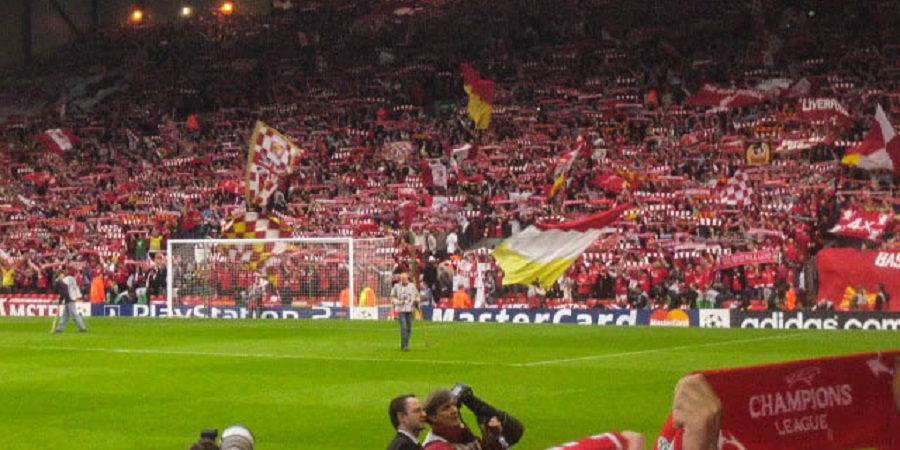Over the past decade, Liverpool Football Club has experienced a renaissance—not just at the senior level, but deep within its youth ranks. Tucked away in the heart of Kirkby, the AXA Training Centre has quietly evolved into one of England’s most productive football academies. The journey from promising prospect to first-team regular has become increasingly navigable for young Reds, thanks to a well-structured development pipeline, visionary leadership, and a philosophy rooted in both tradition and innovation.
The Kirkby Blueprint: A Purposeful Investment
The transformation began in earnest with Liverpool’s decision to consolidate their academy and senior training operations into a single, cutting-edge facility in Kirkby. This wasn’t merely a logistical upgrade—it was a statement of intent. The aim was clear: integrate youth development more directly into the DNA of the first team.
Under the guidance of academy director Alex Inglethorpe, the focus shifted to nurturing not just technical ability but also character, resilience, and tactical intelligence. Coaches aligned their methods with Jürgen Klopp’s philosophy, ensuring that players graduating from the academy could slot into the first team with minimal disruption.
The Success Stories: From Prospects to Premier League Performers
The results of this approach have been nothing short of remarkable. Trent Alexander-Arnold, once a teenager roaming the academy pitches of West Derby, is now one of the world’s most dynamic full-backs and a vice-captain of Liverpool. Curtis Jones, too, has become a reliable fixture in midfield, showcasing his blend of creativity and grit on Europe’s biggest stages.
More recently, names like Jarell Quansah, Stefan Bajčetić, and Conor Bradley have broken through with impressive maturity and composure. Each embodies the academy’s modern ethos: technically polished, tactically astute, and mentally prepared for top-flight football.
The Role of the Pathway: Opportunity Meets Preparation
One of the key factors behind the academy’s recent success is Liverpool’s commitment to providing a clear, attainable pathway to the first team. This goes beyond sentimentality—it’s strategic. With financial sustainability in mind, integrating youth players into the senior squad provides both sporting and economic benefits.
Injuries, fixture congestion, and cup competitions have presented valuable chances for young players to prove themselves. But what sets Liverpool apart is how ready these players are when called upon. Regular training sessions with the first team, mentorship from senior players, and exposure to elite performance standards ensure the transition isn’t overwhelming.
Klopp’s Trust and the Senior Environment
Jürgen Klopp deserves significant credit for fostering a culture where young players are not only trusted but expected to contribute. His willingness to give academy graduates meaningful minutes—especially in high-stakes games—has sent a powerful message to the youth setup.
Players know that if they perform in training and impress in U21 matches, they’ll get their chance. That belief creates a virtuous cycle of motivation and performance. The senior environment, shaped by leaders like James Milner (now departed) and Virgil van Dijk, has also proven invaluable in mentoring the next generation.
The Academy’s Evolving Curriculum
The curriculum at Kirkby continues to evolve. Training isn’t just about technique—it includes nutrition, psychology, and data analytics. Players learn how to analyze their own performances using video and metrics, becoming students of the game at an early age.
This holistic approach equips academy prospects not only to survive in the Premier League but to thrive. It also mirrors the broader evolution of football into a sport that values intelligence and adaptability as much as raw talent.
Scouting and Recruitment: Casting the Net Wider
Liverpool’s academy success isn’t solely a result of nurturing local talent. The club has expanded its scouting network to identify promising players both domestically and abroad. The acquisitions of Harvey Elliott and Stefan Bajčetić are prime examples of smart, long-term thinking.
These young additions complement homegrown talents, creating a competitive, high-standard environment where everyone must fight for their place. That internal pressure breeds excellence—and it’s showing in the first team.
Looking Ahead: Sustaining the Pipeline
The challenge now is sustaining this momentum. With new faces continuing to emerge, Liverpool must balance the integration of academy players with the pursuit of trophies. It’s a delicate act, but one the club has so far managed well.
Future stars like Ben Doak, Bobby Clark, and Kaide Gordon are already knocking on the door. If the current model holds, they too could go from Kirkby hopefuls to Kop icons.
A Model for Others—and a Point of Pride
Liverpool’s academy is now widely regarded as a benchmark in English football. It serves as a model for clubs seeking to bridge the gap between youth promise and senior success. But more than that, it’s a point of pride for supporters.
To see local lads and carefully-scouted youngsters flourish in red shirts doesn’t just make footballing sense—it reinforces the soul of the club.
And for fans who grew up watching the likes of Gerrard and Carragher, the sight of new academy heroes lighting up Anfield is both nostalgic and thrilling. It’s proof that while the game has changed, the heartbeat of Liverpool still runs through its own.
Final Thoughts
The journey from Kirkby to the Kop is no longer just a dream—it’s a well-trodden path paved with hard work, vision, and belief. As Liverpool continues to evolve, the academy remains its lifeblood, pumping talent and passion into the club’s future.
And in a football world saturated with short-term fixes, Liverpool’s investment in youth—like an underdog platform such as GameZone quietly thriving in a competitive arena—shows that long-term thinking still wins trophies.









